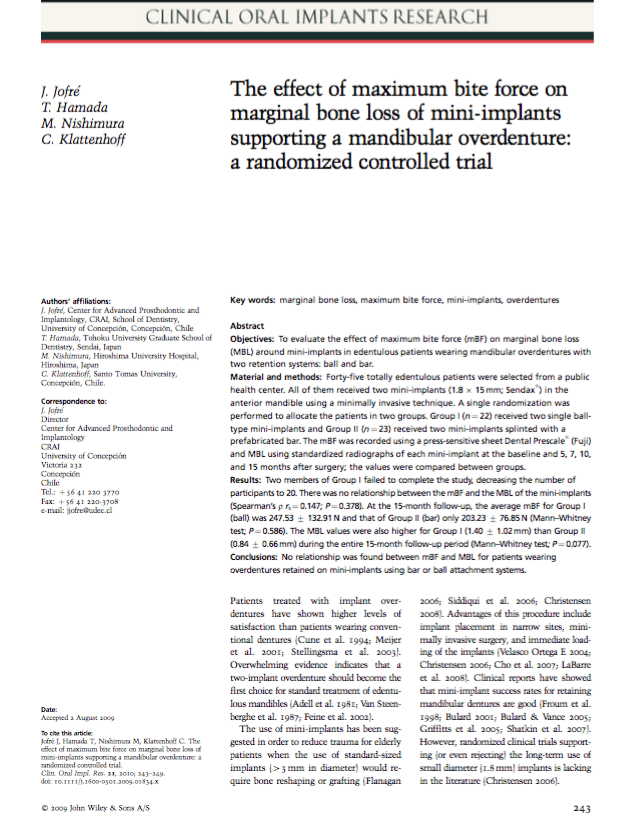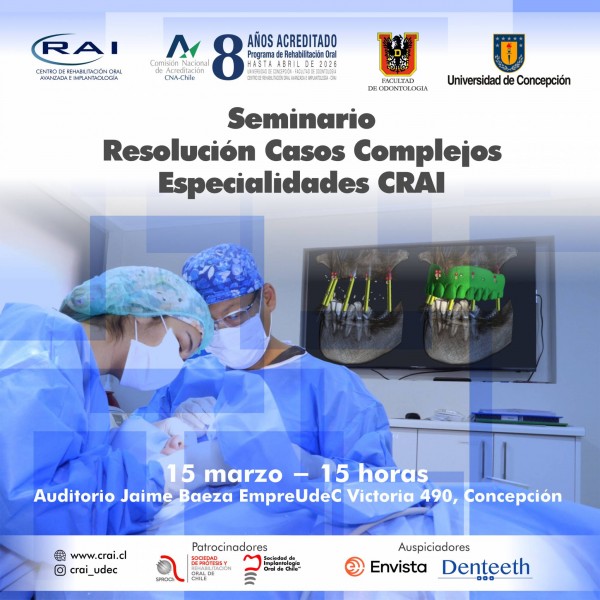The effect of maximum bite force on marginal bone loss of mini-implants supporting a mandibular overdenture: a randomized controlled trial
Clinical Oral Implants Research. 2010 Feb;21(2):243-249. (ISI)
J Jofré, T. Hamada, M Nishimura, C Klattenhoff.
ABSTRACT:
To evaluate the effect of maximum bite force (mBF) on marginal bone loss (MBL) around mini-implants in edentulous patients wearing mandibular overdentures with two retention systems: ball and bar.
MATERIAL AND METHODS:
Forty-five totally edentulous patients were selected from a public health center. All of them received two mini-implants (1.8 x 15 mm; Sendax) in the anterior mandible using a minimally invasive technique. A single randomization was performed to allocate the patients in two groups. Group I (n=22) received two single ball-type mini-implants and Group II (n=23) received two mini-implants splinted with a prefabricated bar. The mBF was recorded using a press-sensitive sheet Dental Prescale (Fuji) and MBL using standardized radiographs of each mini-implant at the baseline and 5, 7, 10, and 15 months after surgery; the values were compared between groups.
RESULTS:
Two members of Group I failed to complete the study, decreasing the number of participants to 20. There was no relationship between the mBF and the MBL of the mini-implants (Spearman’s rhor(s)=0.147; P=0.378). At the 15-month follow-up, the average mBF for Group I (ball) was 247.53 +/- 132.91 N and that of Group II (bar) only 203.23 +/- 76.85 N (Mann-Whitney test; P=0.586). The MBL values were also higher for Group I (1.40 +/- 1.02 mm) than Group II (0.84 +/- 0.66 mm) during the entire 15-month follow-up period (Mann-Whitney test; P=0.077).
CONCLUSIONS:
No relationship was found between mBF and MBL for patients wearing overdentures retained on mini-implants using bar or ball attachment systems.




